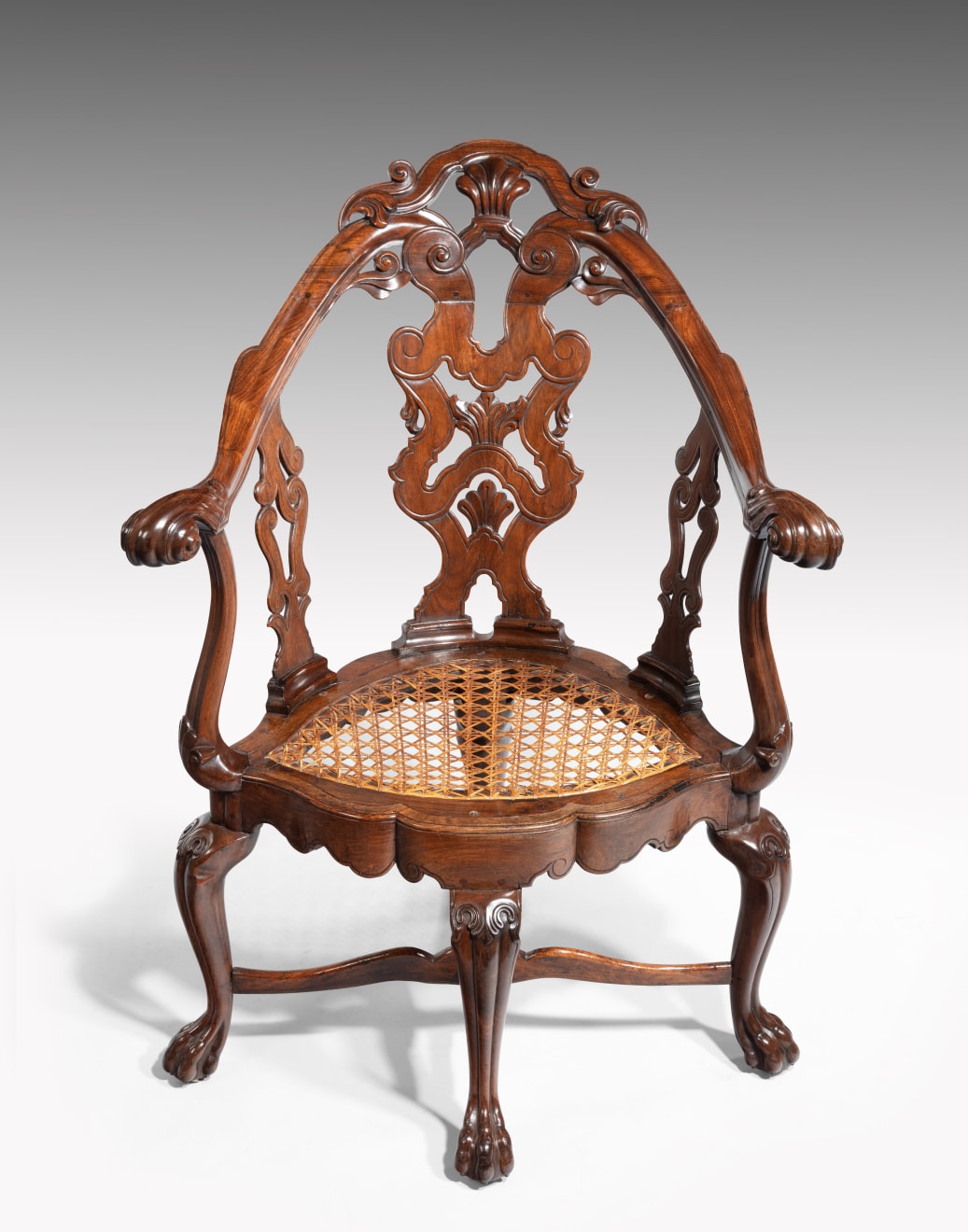Indo-Portuguese Carved Padouk Armchair
42 ¼ x 21 ¼ in
Further images
The shaped and carved top rail centred by carved cresting sweeping into arms terminating in scrolls supported by one central and two lateral splats with apparently original caned seat on four carved cabriole legs joined by shaped x-form stretchers.
This chair was made in Goa in the 18th Century at a time when furniture design was influenced by Portuguese forms, but also the growing community of Chinese chair makers working there. Interestingly there are examples of Goan furniture with both Chinese and English characteristics as well as, in this case, a Goan chair with both Chinese and Portuguese characteristics.
In Helder Carita’s book, ‘Palaces of Goa – Models and Types of Indo-Portuguese Civil Architecture’, there are many interesting views of Palace interiors. Of particular note, there is a very similar chair illustrated amongst the furnishing of the Braganca Palace at Chandor.
The “corner” chair form was popular in 18th Century Goa and the pair of armchairs in the collection of the V&A demonstrate the influence of the English form, while sharing the x-frame low stretchers and the characteristic continuation of carving flowing from the knee down into the foot, so often seen in 18th Century Goan furniture.
A Chinese Export Padouk Double Chair-Back Settee, Attributed to a Chinese maker in Goa, c.1750 was also previously sold by Thomas Coulborn and Sons.












